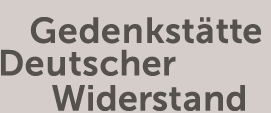German Resistance Memorial Center 5 Resistance out of Christian Faith
5 Resistance out of Christian Faith
The National Socialists also staked a claim to control the views of the Christian churches. Isolated Protestant clergymen and parishioners resisted the intentions of the National Socialist “German Christians.” In 1933 they came together in the Pastors’ Emergency League, and in 1934 they formed the Confessional Church. The few pastors who adopted fundamental opposition to National Socialism over the years were excluded from their parishes or imprisoned. Protestants who took a political stance against the Nazi regime drew strength from the principles of their faith, with no hope of support from their church.
Many Catholics viewed the new authorities with caution, and hoped the concordat with the Vatican in July 1933 would ensure autonomy for their church. From 1935 on, the Nazi leadership intensified its ideological battle against the Catholic Church by means of a defamation campaign against priests and members of religious orders. However, many religious people did not bow to National Socialism’s totalitarian claim to rule.
Hitler’s order in the fall of 1939 to murder patients in mental institutions and convalescent hospitals prompted dissent from isolated bishops, clergymen, and Christians. During the war, hundreds of clergymen were interned in concentration camps, banned from preaching, or placed under house arrest. Many of them did not survive their imprisonment; some were sentenced to death by the National Socialist “People’s Court.”
Members of small religious communities such as the Jehovah’s Witnesses and the Quakers resisted the National Socialists’ attempts to impose their ideology. They refused to swear oaths to Hitler, to perform military service, or to join Nazi organizations, and helped persecuted individuals. More than 1,200 Jehovah’s Witnesses fell victim to the National Socialist persecution.
Biographies
Documents
 Theological Declaration of Barmen,passed by the Confessional Church’s Barmen synod on May 31, 1934, and widely distributed as a leaflet.
Theological Declaration of Barmen,passed by the Confessional Church’s Barmen synod on May 31, 1934, and widely distributed as a leaflet.
Source: Gedenkstätte Deutscher Widerstand
English translation: Katy Derbyshire; English editing: Ginger A. Diekmann;
Editing: Ute Stiepani
1st edition 2016
 Memorandum from the Provisional Executive elected by the Fraternal Council, and the Council of the German Evangelical Church to Adolf Hitler, May 28, 1936.Source: Private
Memorandum from the Provisional Executive elected by the Fraternal Council, and the Council of the German Evangelical Church to Adolf Hitler, May 28, 1936.Source: Private
English translation: Katy Derbyshire; English editing: Ginger A. Diekmann;
Editing: Ute Stiepani
1st edition 2016
 Encyclical “Mit brennender Sorge“ (“With Deep Anxiety”) issued by Pope Pius XI, March 14, 1937, to the German bishops and the world church,illicitly printed in Germany and read from pulpits on March 27, 1937.
Encyclical “Mit brennender Sorge“ (“With Deep Anxiety”) issued by Pope Pius XI, March 14, 1937, to the German bishops and the world church,illicitly printed in Germany and read from pulpits on March 27, 1937.
Source: Stadtarchiv Düsseldorf
English version: © LIBRERIA EDITRICE VATICANA
Editing: Ginger A. Diekmann / Ute Stiepani
1st edition 2016
 Transcript of a sermon by the Bishop of Münster Clemens August Graf von Galen, August 3, 1941. Source: Evangelische Kirche im Rheinland
Transcript of a sermon by the Bishop of Münster Clemens August Graf von Galen, August 3, 1941. Source: Evangelische Kirche im Rheinland
English translation: Katy Derbyshire; English editing: Ginger A. Diekmann;
Editing: Ute Stiepani
1st edition 2016
 Open letter from the Jehovah’s Witnesses, June 1937.Tens of thousands of copies of this leaflet were printed in secret in Germany and distributed on a single day, June 20, 1937.
Open letter from the Jehovah’s Witnesses, June 1937.Tens of thousands of copies of this leaflet were printed in secret in Germany and distributed on a single day, June 20, 1937.
Source: LAV NRW R, RW 0058 Nr. 4502, Abb. 193, 194
English translation: Katy Derbyshire; English editing: Ginger A. Diekmann;
Editing: Ute Stiepani
1st edition 2016



















